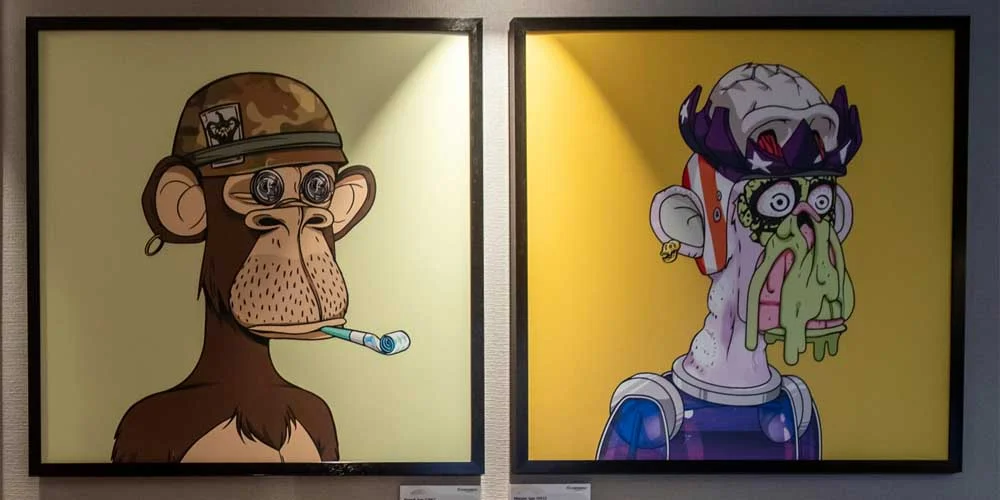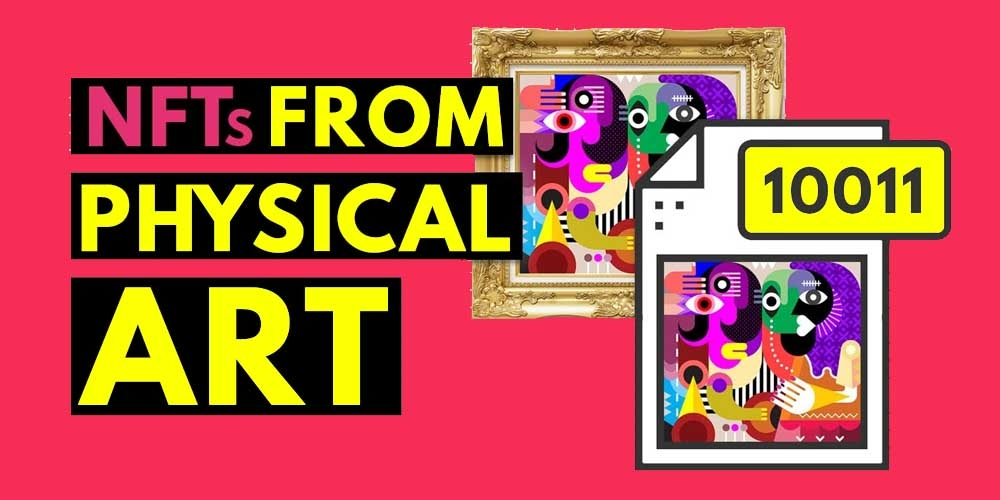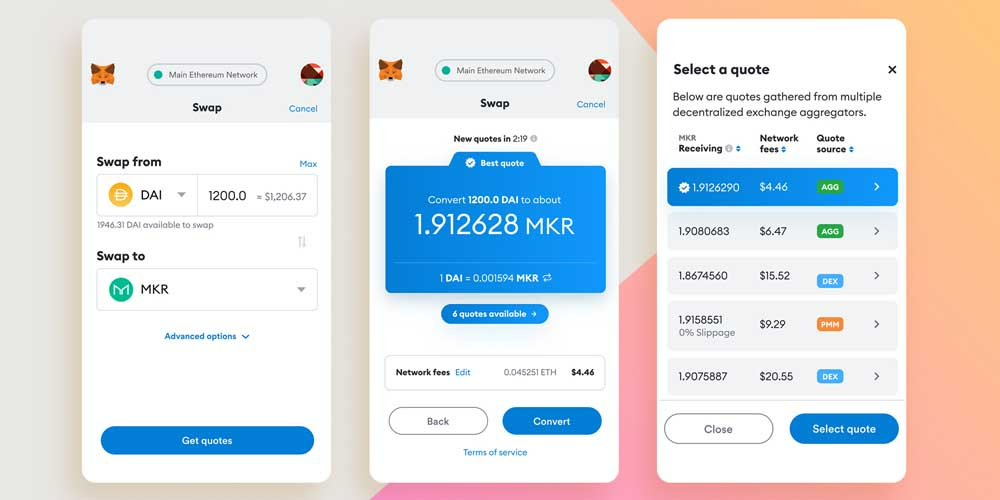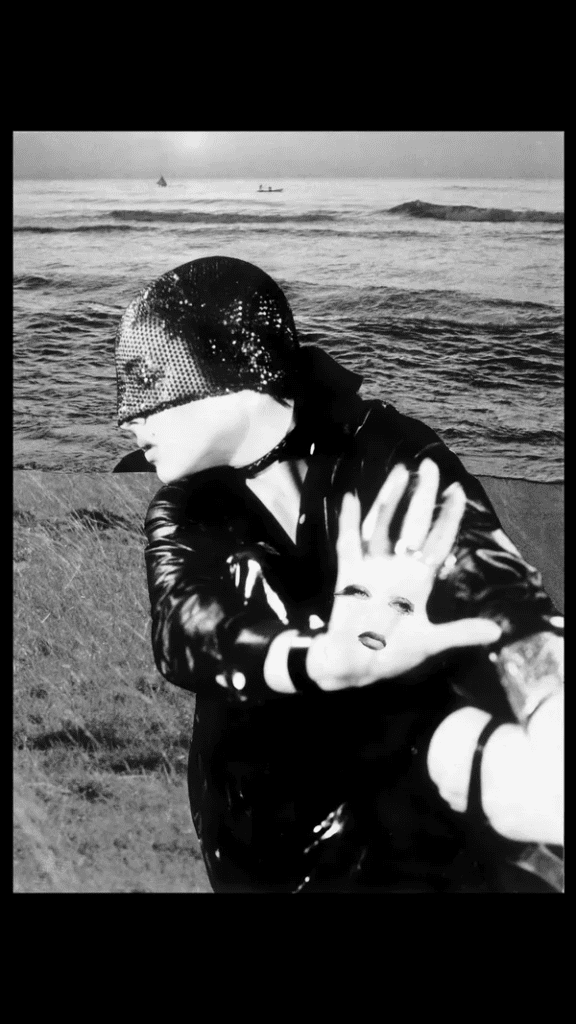When we think of art, we often picture a painting hanging on a wall or a sculpture on display in a museum. However, in the world of blockchain technology and digital art, a new type of artwork has emerged: the physical NFT.
While physical art is a tangible object that can be bought and sold, a physical NFT combines the traditional medium of art with the unique properties of non-fungible tokens (NFTs), creating a one-of-a-kind piece that exists both in the physical and digital realms. In this article, we will explore what a physical NFT is and how you can create one yourself.
This article is a segment of a longer piece on creating an NFT token.
What Is an NFT?
NFT stands for a non-fungible token. NFT describes an asset, either digital or physical, that cannot be replaced by something else due to its unique nature. Additionally, an NFT is proof that the holder is the asset’s owner, which gives more value to the piece.
What Is a Physical NFT?

A physical NFT art is a real-life version of a non-fungible token. In general, this real-world version has been created the digitized copy and is unique, although there might be several copies in some cases.
Artists and creators can trade both physical NFTs and digital NFTs at the same time. Since an NFT can be a digital version of a physical artwork, both can be sold separately in the real world and the NFT space.
A physical NFT can be created from any type of tangible object. Let’s consider an example of a physical NFT created from a rare collectible item, such as a baseball card.
Imagine you have a limited edition, signed baseball card that you would like to turn into a physical NFT. By attaching a digital token to this physical item, you would create a unique and verified asset that can be bought, sold, and traded on the blockchain. This physical NFT would not only hold sentimental and artistic value as a rare collectible item but also have financial value as a verifiably unique digital asset.
In essence, a physical NFT can be created from any physical item, whether it’s a painting, sculpture, collectible item, or any other tangible object that holds artistic or sentimental value.
Four Approaches When Turning Your Physical Art into an NFT

As we mentioned before, digital artwork can coexist with a physical piece of art. Both inhabit different worlds and with the proper smart contract, you won’t have problems properly trading both and getting profits. In this sense, there are four approaches when digital artists convert physical art into digital.
Your Physical Artwork as a Starting Point for your NFT
The most common way of working with physical artwork in the digital world is using prior physical work as a starting point for a digital asset. So, you can export your physical works into software and begin to edit or intervene in them.
Market Both Physical and Digital Pieces of Art
Once you have digital and physical versions of your NFTs, you can choose to market them in the digital and real world. They are not mutually exclusive. Selling physical art can coexist with selling digital versions of that artwork in real life.
Remember that if the aforementioned happens, you must give a digital certificate to ensure the digital NFT holder is the only owner of the digital version of the physical artwork.
Sell Just One Art Piece and Add On the Other
There are two ways of addressing this method:
- You can sell the non-fungible token with the original physical piece of art;
- You can sell the physical product and add the NFT token to it, with the respective certificate of authenticity.
Most platforms allow you to perform both ways, giving you more control over NFT trading. In this sense, OpenSea is an excellent NFT marketplace where you can upload an image of the physical asset and share it in the description.
Digitize Your Physical Art Piece and Destroy it
This is the most radical method since you destroy the original images by selling their digital versions. This is a solution when you must ensure interested ones that your collectibles are unique and authentic. Besides, it’s a technique to create scarcity and rarity and increase demand for your non-fungible tokens.
How to Transform a Physical Artwork into an NFT?
You need to understand that you can transform any piece of physical art –if you’re the owner, of course – into digital art, understood by an NFT.
- Create your Physical Artworks

Everything you create in real life can be turned into a digital asset thanks to technology, the Blockchain, and NFT platforms. But first, you must meet the most common ways of creating an asset in real life.
Painting
Painting is very likely one of the most challenging techniques you can face when creating a piece of artwork. An artist who knows how to paint correctly is a complete artist who knows how to draw, configure, take photos, and color theory. An excellent example of a painter who morphs his paintings into digital scenes is Mad Dog Jones.
Photography
You can photograph anything you want and turn it into an NFT. That could be a landscape, a cat, or a baby, your drawings and painting, and then intervene with specialized software. This way, you can change the contrast, the tone, change colors and resolutions, and do whatever you want to improve the original material.
Engravings
With engravings, it’s similar to painting. You need excellent skills to make one. Still, engravings can be serialized, so you can make as many copies as you want. Each copy has its serial number. The process of creating engravings never ends. You can choose the best copy and convert it into an NFT.
Drawings
A great drawing can become an extraordinary piece of art. Do not underestimate the future sales of NFT based on drawings. After finishing your drawing, you should scan it to digitize it.
Create a Digital Copy of Your Physical Asset

Once you have finished your physical NFT, it’s time to digitize it. Here, you have two options. You can take a photo, or you can use a scanner for better results. The decision will depend on the size of the artwork and the disposition of resources.
If you prefer the first option, we recommend acquiring a good camera with high resolution. The quality of the NFT will depend directly on the initial capture. If you lean for the second option, you can always go to a copy center and scan your image with a professional scan.
Get a Digital Wallet

This step is mandatory to mint your new digitized image in an NFT platform. You necessarily need to open an account in a digital wallet, such as MetaMask, Coinbase, or Trust Wallet. Once you determine which wallet you will use, you must load it with funds.
These funds are to pay the gas fees when minting your digital assets in the platforms. Remember that the wallet you choose allows you to buy the digital coin you need, i.e., Ethereum, Solana, Polygon, etc.
Mint Your New Digital Artwork as an NFT

The final step is the easiest. According to the Blockchain you choose, you must choose the right platform supporting that technology. For example, if you selected Ethereum, then a good choice is OpenSea.
Now, you only need to access the website, set up your wallet, and click upload. Now collectors can see your NFT and check if it’s linked to a photo of the original artwork. Linking physical art like a proof of the NFT linked is the only copy of the initial material.
Set the price and purchase method and wait for interested buyers.
A Couple Examples of Physical NFTs
Currently, there are not too many NFT artists who start with physical artwork since they prefer digital tools to beginning with creations. Still, the number is increasing since NFT are becoming more popular.
Sculptures of Xavier Magaldi

Xavier Magaldi is a Swiss metal sculptor who has started to convert his physical artwork into augmented-reality art pieces. He uses 3D models for people experimenting with his work directly, which is required by volumetry. Both works are on sale, so you can get the NFT and still have a digital certificate of authenticity for the physical piece.
Photos of Penny Slinger

Penny Slinger is an American artist who uses cinema and photos to create collages and poetry. She has used old pictures of her authorship to illustrate her first book, The Visible Women, released in 1971. This work is her first NFT, deconstructing the old images and replacing crucial parts with other Slinger’s photos.
The Bottom Line
Everyone can create a physical NFT or a digital asset based on physical artwork. Pieces of digital art can be easily copied and registered with a camera or scanner and then uploaded to the Internet. In this sense, possibilities are endless. Besides, this process is similar to minting NFT directly in marketplaces, only the source is different.
Then, if you’re an artist and want to increase your fame online or reach new markets and customers, converting your artwork into NFT takes on particular relevance. Now the possibility is accessible to you!
Just follow the steps mentioned above, and soon you’ll see your art swarming online!